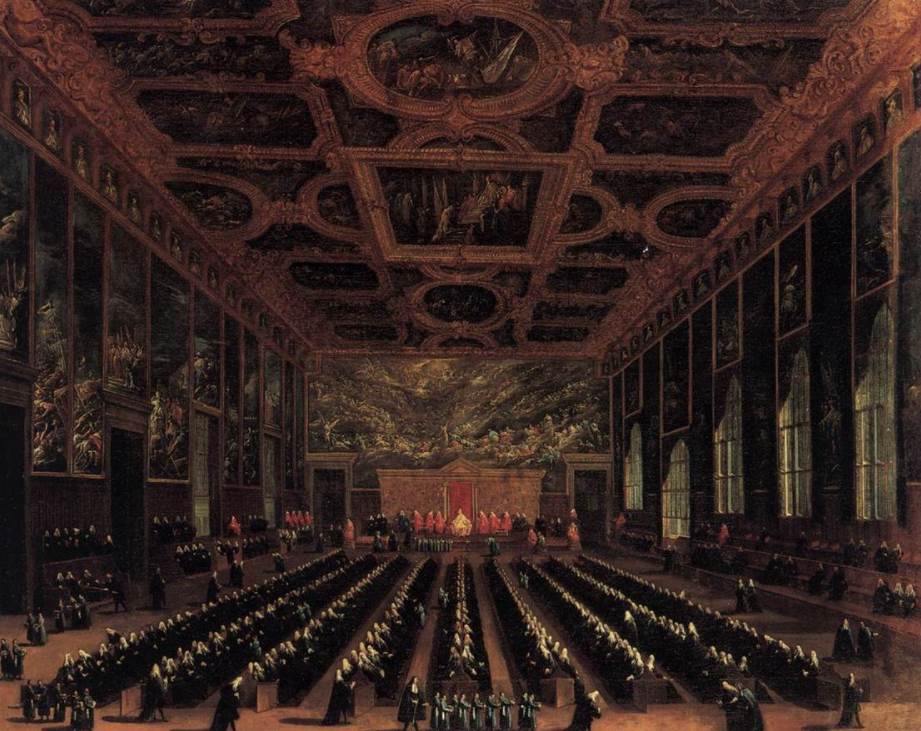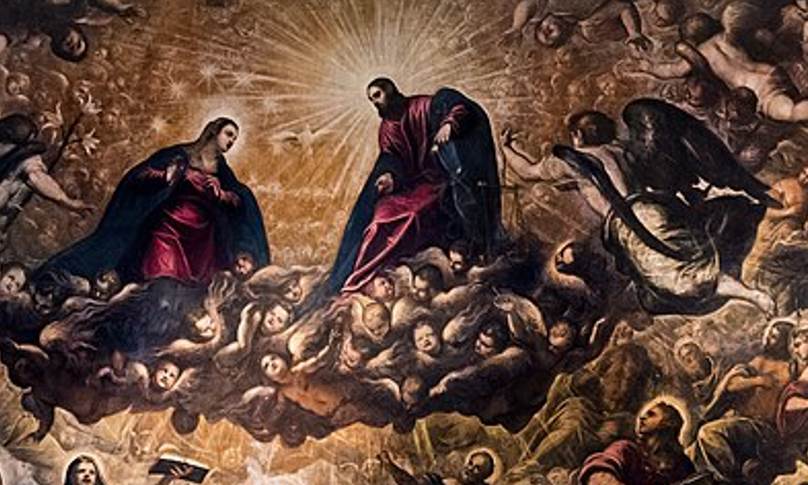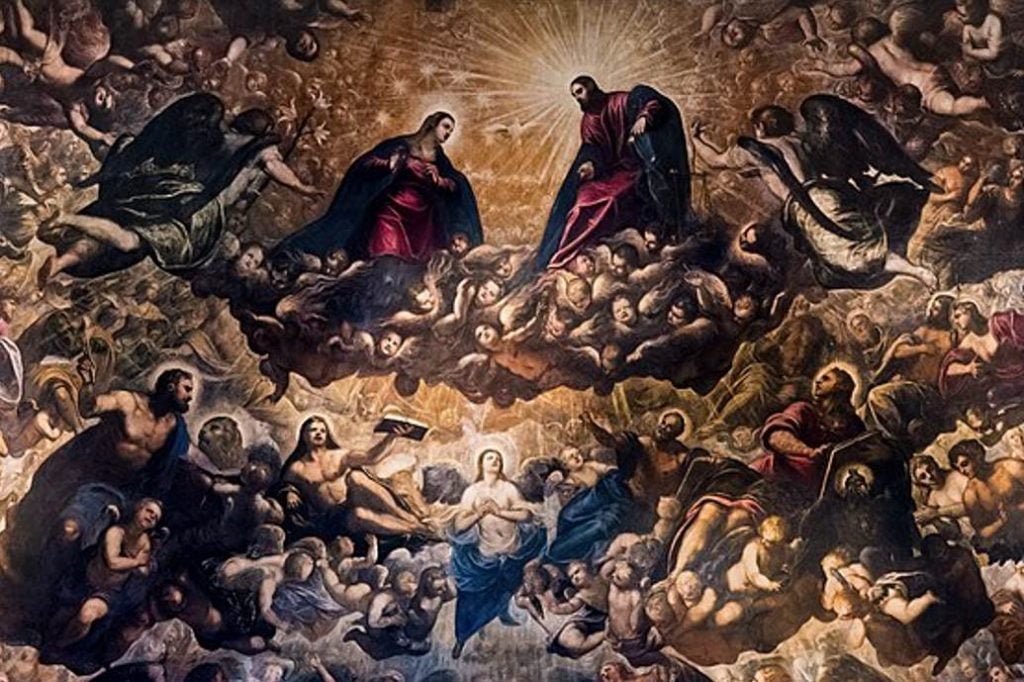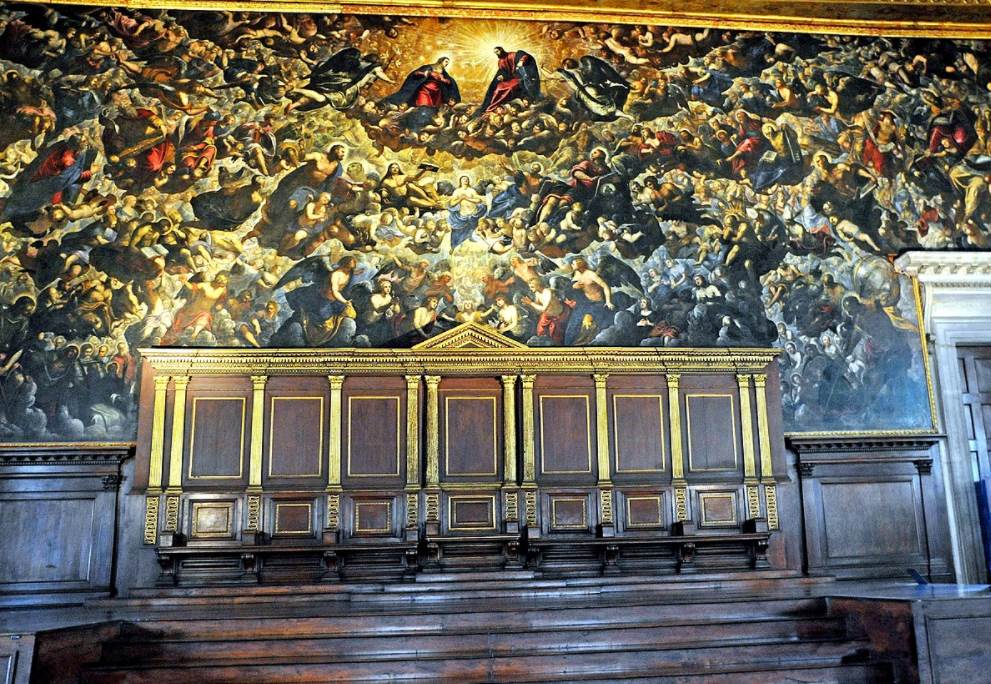When Jacopo “Il Furioso” Robusti (1518-1594), better known by the nickname he received as a little boy, “Tintoretto,” started working on one of his monumental masterpieces, he didn’t mess around.
This is especially emphasized by one of the largest paintings he ever created (and that means something) known as “Il Paradiso.”
Let’s take a closer look at some of the most interesting facts about this grandiose work of art by this remarkable Mannerist artist.
1. It’s one of the largest paintings ever created
Tintoretto was known as “Il Furioso,” a reference to the speed and aggressiveness with which he painted. This often resulted in monumental paintings that were completed in just a fraction of the time that other artists could do the same work.
He clearly outdid himself with this particular painting as it’s considered to be one of the largest paintings on canvas in the world.
The painting was completed in the year 1594 and it has dimensions of 9.1 x 22.6 meters (29.9 x 74.1 feet), an incredible work of art.

2. Over 500 figures are depicted in it
The central part of the painting depicts a path of light opening up the Empyrean, the highest part of Heaven. Christ is depicted in this pathway with the light of the Holy Spirit radiating from him.
The souls of the Just are ready to be judged before they ascend into the heavens above, and they are quite large in numbers as well.
Over 500 figures are depicted to the side of this glorious central part of the painting. They encircle the figure of Jesus Christ and the Virgin Mary, starting with the Apostles and the Saints.
What’s remarkable about this immense painting is that all of the figures were painted in perfect detail, quite amazing.
3. It’s located in a famous structure in Venice
If you want to admire this magnificent painting today, you can! It’s still located in the same spot that was originally installed at, the Doge’s Palace in the city of Venice, Italy.
As the name of the palace implies, the Doge’s Palace was the residence of the Doge of Venice, the ultimate authority in what was then the Republic of Venice.
The painting was installed right behind where the Doge’s throne was situated in the palace’s main hall. This was also where the other wealthy aristocrats and influential people sat during the meetings of the Great Council of the republic.
Yes, this means that this was quite an important location, one of the main reasons why the painting was completed with such huge dimensions.

4. Tintoretto originally didn’t receive the commission
What’s remarkable about this painting is that Tintoretto’s biggest competitor during his lifetime, Paolo Veronese (1528-1588), originally received the commission for this work. He earned the commission together with Francesco Bassano (1549-1592).
Both artists starting working on it after winning a competition, but unfortunately, Veronese died before the work could be completed.
This means that Tintoretto earned the commission following this tragic event and after submitting a new proposal featuring 2 sketches.
5. Many parts were painted by Tintoretto’s son
This wasn’t just the largest painting that the artist created, it was also the final painting that Tintoretto worked on. He created the sketches of all the figures and instructed his son Domenico, head of his workshop at the time, to complete the work.
The main reason is that the man was aging by then and this huge painting required a lot of energy. Climbing up the scaffolding became too complicated, quite understandable because he was already in his 70s in the 1590s.
Even though he completed large parts himself, most of the actual painting was completed by his son Domenico and other members of his workshop.
He eventually died the year that the painting was completed in 1595, able to admire the completed work before he passed away.

More interesting facts about Il Paradiso by Tintoretto
6. The painting was commissioned to replace another painting that decorated the wall called “Coronation of the Virgin.” This fresco was created in the 14th century by Italian painter Guariento di Arpo (1310-1370).
This fresco was lost in the year 1577 during a fire inside the Doge’s Palace. This means that Il Paradiso was a replacement for this original work of art that decorated the same wall.
7. The original work was held in very high esteem by the leading figures of the Republic of Venice at the time. The instructions given to the artists for the competition mostly revolved around recreating the elements of this 14th-century fresco.
The reference included by Tintoretto is the Archangel Gabriel who holds out a lily to the Virgin Mary. This element was also included in the original fresco as a version of the “Annunciation,” the announcement made by Gabriel to Mary that she will bear the son of God.

8. Apart from the common religious figures such as Jesus Christ, the Virgin Mary, and various Angels, Apostles, and Saints surrounding them, there are also other references to other religious figures.
One of the most prominent ones is Justina, the patron saint of Padua. This was the home city of Guariento di Arpo, the painter of the original fresco.
9. Even though Tintoretto referred to the Annunciation, the main figure of the painting isn’t the Virgin Mary but Jesus Christ. He acts as the final judge to allow the entrance to the gates of Heaven.

That’s mainly because the Council of Venice wanted to evoke the idea of the Last Judgement, ultimately the main theme of the painting. This served as a hint to the people visiting the meetings to be mindful of their actions.
10. According to British art critic and historian John Ruskin (1819-1900), a man who lived during the Victorian era, this painting was the “most precious work of art of any kind whatsoever, now existing in the world.”
The sheer size of this work in combination with the level of skill and details make it hard to deny that this is indeed one of the world’s ultimate art treasures!

